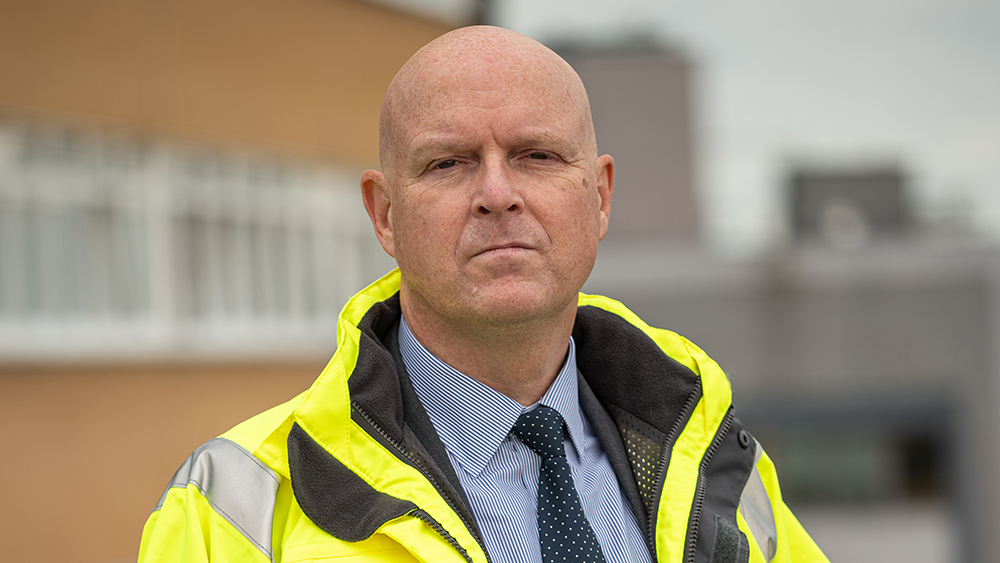
Peter Baker, appointed as chief inspector of buildings earlier this year, will lead the new Building Safety Regulator. Theresa Mohammed, Stephanie Geesink and Dominic Turner-Harriss look at how this vital role will work.
A key recommendation of Building a Safer Future, Dame Judith Hackitt’s 2018 review of the building industry, was the creation of a new national regulator, tasked with promoting and enforcing safety in the built environment, led by a new chief inspector of buildings.
The Building Safety Regulator (BSR) is now a cornerstone of the Building Safety Bill, which was presented to parliament in the summer, and has been set up in shadow form, sitting within the Health and Safety Executive (HSE). In February, the HSE announced the appointment of the first chief inspector of buildings. Peter Baker, who previously headed up the HSE’s construction operations, will lead and operate the regulator, and will therefore be central to the building safety reform programme.
The regulator’s powers are extensive and multi-faceted, requiring it to undertake a variety of roles. The Bill sets out three main functions that the regulator must exercise with a view to “securing the safety of people in or about buildings in relation to risks arising from buildings; and improving the standard of buildings” (see box, p21).
The three principal functions of the Building Safety Regulator
1. Implementing the new regulatory regime for higher-risk buildings.
2. Overseeing the safety and performance of all buildings in England. This will involve overseeing the performance of other building control bodies, managing a new building safety inspectorate, advising on building standards and safety risks and prosecuting wrongdoers.
3. Assisting and encouraging competence among the built environment, the building industry and registered building inspectors. The regulator will be required to establish a unified building control profession with competency requirements common across both the public and private sectors.
As the Bill’s legislative process progresses, the role of the BSR could change. Responsibility for guiding the regulator through this turbulent period will fall to Baker. In the meantime, the HSE and the BSR are working with the Department for Levelling Up, Housing and Communities to implement the legislation, consulting with the industry itself and building the internal processes that the BSR will work to.
In addition, two governance committees, as well as a residents’ panel, are to be set up to assist the BSR in its role in regulating the new building safety regime:
- The industry competence committee, set up to help improve industry competence, publishing relevant guidance and advising the industry directly; and
- The building advisory committee, set up to help the BSR meet its duty to keep the safety and standard of all buildings under review, provide advice and expertise and help to develop future building regulations.
As well as establishing the new regulatory regime for higher-risk buildings – any buildings at least 18m high and with at least seven storeys – the regulator is also expected to manage the process.
The regulator will automatically become the building control authority for new higher-risk buildings in England and will oversee the approval process for Gateways 2 and 3 – the mandatory safety checks that will be required during design and construction projects on all higher-risk buildings, including a series of ‘hard stops’, whereby the next stage of the project will not be able to proceed until the relevant gateway is achieved. The BSR will take charge of establishing and managing a new building safety inspectorate to assist with these inspections.
The regulator and its inspectors will be empowered to issue compliance notices and stop notices for higher-risk buildings during any stage of the design and construction process. Compliance notices will require non-compliant works to be rectified by a specified date, whereas stop notices will require works to be halted until any instances of serious non-compliance are addressed.

Peter Baker CV
Feb 2021-present: Chief inspector of buildings
May 2020-Jan 2021: Director, building safety and construction, HSE
Oct 2018-May 2020: Director, building safety programme response, HSE
April 2015-Sept 2018: Chief inspector of construction, HSE
Apr 2013-Mar 2015: Head of Chemicals, Explosives & Microbiological Hazards Division, HSE
Sep 2013-May 2014: Acting director, Hazardous Installations, HSE
Apr 2008-Mar 2013: Head of Chemical Industries Division, HSE
Education: BSc Chemistry, University of Sheffield; Postgraduate diploma, occupational safety & health, Aston University
Failure to comply with the regulator or its authorised officers, or to register a higher-risk building before it is occupied, will be criminal offences, punishable by fines or imprisonment. The regulator will be empowered to prosecute breaches of the design and construction process for higher-risk buildings, and may impose special measures where any building is being mismanaged by the relevant accountable person. Residents of higher-risk buildings will have the right to escalate building safety concerns to the regulator.
Before this new regime for higher-risk buildings can be implemented, Baker must grow the shadow form BSR into a fully functioning linchpin of building safety. He has estimated that the BSR will need to recruit 700 staff to become the fully operational regulator that has been tasked with promoting and enforcing safety in the built environment.
The question has been posed as to how the BSR will locate and recruit this number of highly skilled professionals. Baker has acknowledged this risk and stressed the importance of local authorities and the fire services working together to achieve the BSR’s aims.
Any delay in the setting-up of the BSR could have huge detrimental effects. Parties may experience significant delays progressing through the gateways but, more seriously, unsafe buildings may be constructed and occupied.
Theresa Mohammed is a partner, Stephanie Geesink is a senior associate and Dominic Turner-Harriss is a solicitor at Trowers & Hamlins LLP












